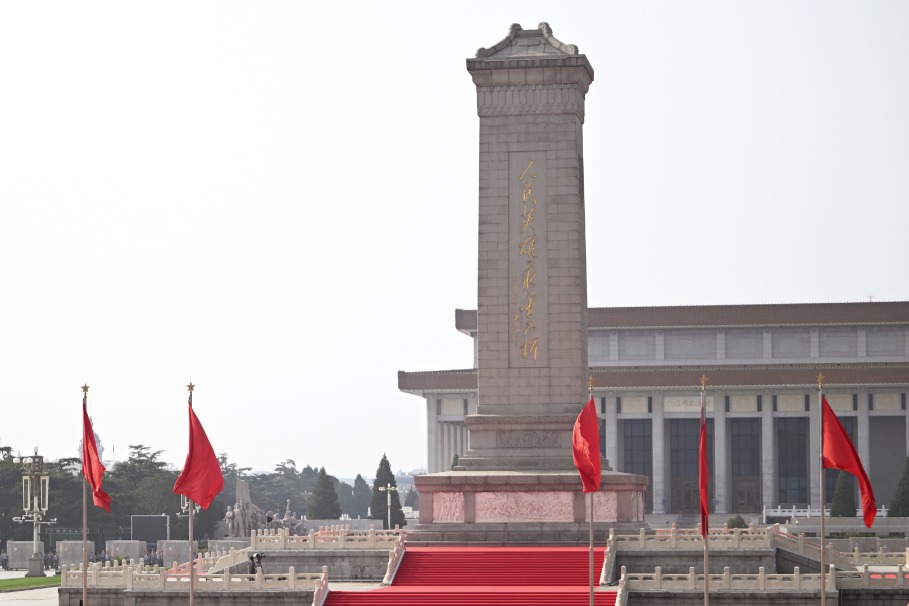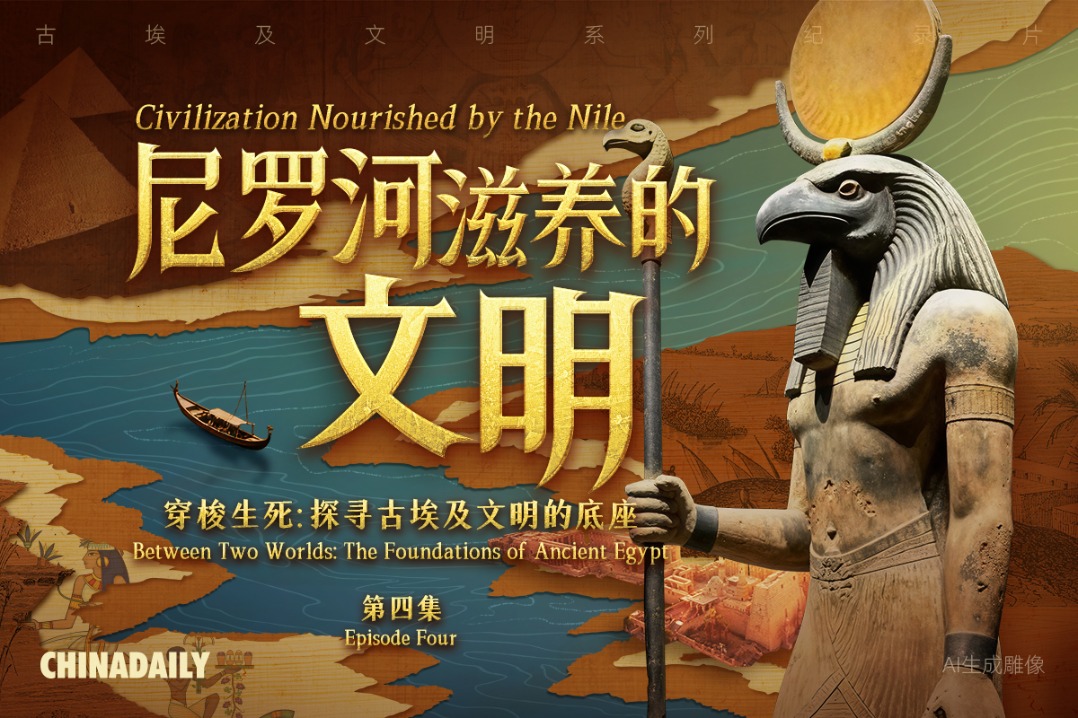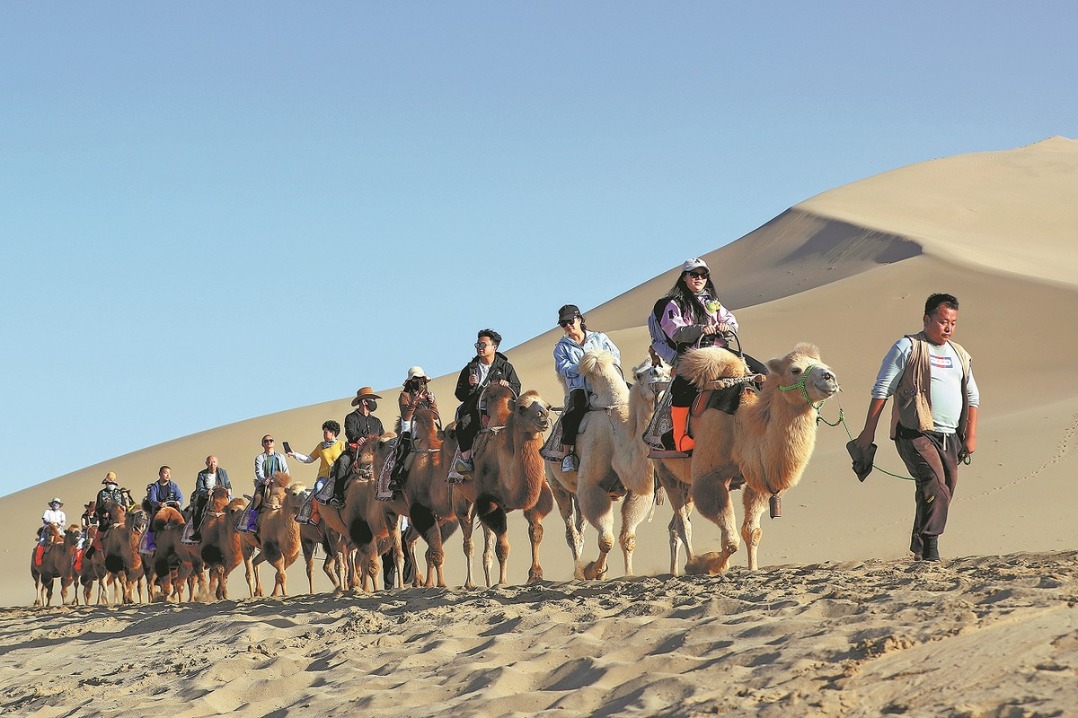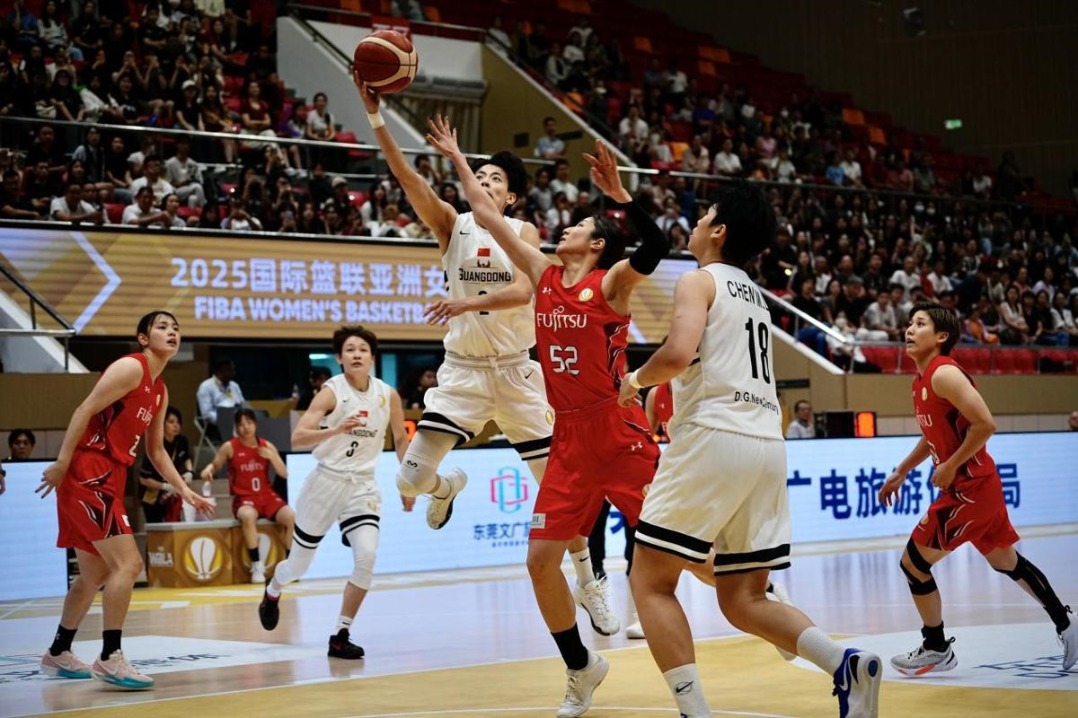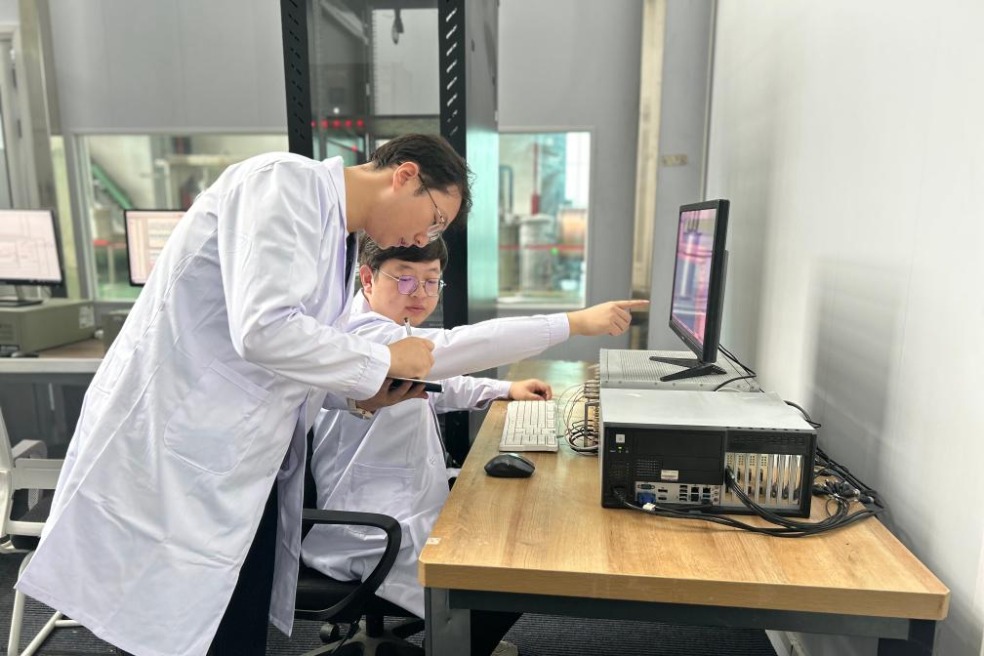Ceramics connection
A Palace Museum team works on port ruins to find links on the ancient Maritime Silk Road, Wang Kaihao reports.

Sailors passing the Hormuz Strait may hardly notice the al-Mataf site, the ancient port ruins just beside the world's busiest maritime trading routes.
Centuries ago, however, this site in Ras al-Khaimah in the United Arab Emirates was the main harbor where ships stopped after entering the Persian Gulf.
The ruins of Jurfa, an international trading port that prospered between the 14th and 17th centuries, are not easily seen above the ground today, but historical witnesses are still there.
At the al-Mataf site, about a one-hour drive from Dubai, ceramic relics echo stories of the ancient Maritime Silk Road. Since 2018, Wang Guangyao, a researcher of porcelain at the Palace Museum in Beijing, has led Chinese archaeologists studying excavation efforts at the al-Mataf site. The team is unveiling the connection between China and the UAE site.
"In all my years of research, I've hardly seen any other port ruins with such an abundant variety of relics from different regions, from China to the Middle East and Europe," Wang, who's also the deputy director of the archaeological institute at the Palace Museum, also known as the Forbidden City, tells China Daily.
Wang, who has researched porcelain for over 30 years, says he is especially drawn to two relics at the al-Mataf site since the Chinese team started its second phase of studies there in November.
Zheng He's voyage
In spite of their small size, two 5-centimeter-long blue-and-white porcelain pieces reflect a grand historical picture of the early Ming Dynasty (1368-1644).
"They were made in the royal Ming kiln during the reign of Yongle (1403-24), judging by the decorative patterns and shapes," Wang says.
"They share features similar to an intact blue-and-white porcelain dish, which is now housed at the Palace Museum."
The royal kiln in Jingdezhen in today's Jiangxi province, known as "China's ceramics capital", began operation in 1369, a year after Ming rule was established. Its products exclusively served Ming royals.
"The death penalty would surely be given if someone outside the royal court dared to use or even create imitations of products of the royal kiln," Wang says.
Portable X-ray fluorescence and spectrometer analysis of cobalt pigments and white-porcelain bodies in the recently discovered pieces have shown similarities with those at the Palace Museum.
"These pieces of imperial ceramics can demonstrate the high-level diplomatic contact between Ras al-Khaimah and China during the early Ming Dynasty," Wang says about the ceramics at the al-Mataf site.
"They were probably gifts brought directly here by Zheng He on his voyage."
In 1405, following Yongle's edict, Chinese mariner Zheng He led his giant fleet to set off on his maiden overseas voyage. By 1433, seven such expeditions had been made to reach regions as far from China as the Red Sea and eastern Africa. Historical documents show his fleet arrived in the Hormuz Strait during the fourth, fifth and sixth voyages.
"But we cannot rule out the possibility that local diplomatic delegates went to China with Zheng He and brought some royal gifts back," Wang adds. "More samples and follow-up research are needed to make this clear."
Also, more than 10 pieces of celadon produced at the Longquan kilns in today's Zhejiang province have been found in al-Mataf. They echo the historical records that say Longquan celadons and blue-and-white porcelain ware were two main Chinese ceramics exports at that time.
Chinese ceramics were valued by locals in the ancient port of Jurfa.
"Wear marks on ceramic pieces suggest the vessels were used daily for one century before breaking," he says. "Probably, they were inherited by generations within families."
Picture of trade
Tibor Paluch, the leading Emeriti archaeologist in the joint excavation with Wang's team, says Chinese ceramics found in Ras al-Khaimah cover a time span from the Tang Dynasty (618-907) to the Qing Dynasty (1644-1911), according to discoveries made since archaeological research began in the region in 1977.
"But the previous research couldn't establish the importance of these finds," Paluch says. "The collaboration with the team from the Palace Museum has resulted in a deeper understanding of the Chinese ceramics found.
"It is also very helpful in developing a broader understanding of the wider trade network in the Gulf and the Indian Ocean involving Chinese ceramics and the strategic role Ras al-Khaimah may have played."
He adds that a good sequence of Chinese ceramics in a very well-preserved stratified deposit in Ras al-Khaimah also provides information beyond porcelain ware. The ongoing joint excavation has unearthed a residential complex with courtyards, storage rooms and kitchens.
"The research is also helping in understanding the changing patterns of the settlement in the hinterland and a wider consumption of Chinese ceramics."
Because of its mountainous landscape in which a seasonal river provides irrigation, Ras al-Khaimah is the only emirate in the UAE with a long history of agriculture.
Even before Jurfa emerged as a major harbor, there was another port called Cush in Ras al-Khaimah whose boom time was during the Arabian Abbasid Dynasty (750-1258). It partially explains why Chinese ceramics produced in the Changsha kiln in today's Hunan province during Tang rule were also found in the emirate.
"They prove booming trade in general," Wang says. "However, as archaeologists, we care more about how exactly they went there: Were they taken to the Gulf region as antique artworks or as popular export products shipped overseas immediately after they were produced? This can only be answered by stratigraphic studies."
Wang has found the soil stratum from the reign of Ming emperor Zhengde (1505-21), which shows traces of human settlement with clear chronological information.
"We'll keep digging to look for those earlier strata," he says.
Though no reference to Ras al-Khaimah has been found in ancient Chinese records, Wang has a physical "database"-over 360,000 ceramic artifacts of different varieties in the collection of the Palace Museum throughout history-for reference.
"Through follow-up analyses, we can hopefully spot clues that link these unearthed ceramic pieces to their exact kilns and production years," he says.
A complete chronology of the Chinese ceramic trade with the Gulf region can also be built up through the research, he suggests.
"We can also see what globalization was like centuries ago," Wang adds.
More Chinese researchers are likely to join the research of Jurfa, says Ahmed Halil, director of archaeology at the Department of Antiques and Museums in Ras al-Khaimah.
Jilin University in Changchun has sent a team to the site for collaborative studies. The Palace Museum will be an associate of a ceramics-research center to be set up in Ras al-Khaimah.
"The findings from the recent excavations will be presented (in public shows) after the processing and evaluation," Halil adds.
He says his department is seeking to cooperate with the National Center of Underwater Cultural Heritage of China that has worked with Saudi Arabia since 2018 on the port ruins of al-Serrian, which prospered from the ninth to the 13th centuries, near Mecca.





Today's Top News
- Xi calls for forging ahead with determination in advancing Chinese modernization
- Xi's article on community for Chinese nation to be published
- Xi pays tribute to national heroes on Martyrs' Day
- China taking measures to end cervical cancer among women and girls
- Culture tourism fuels global exchange
- Lawmakers from US rebuked for distorting UN stance

















